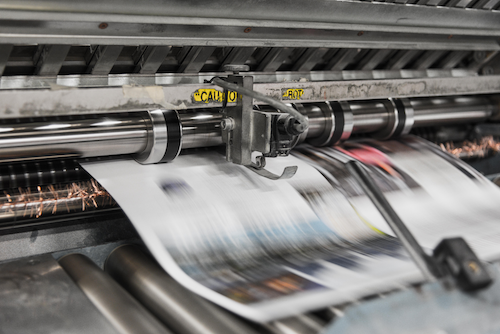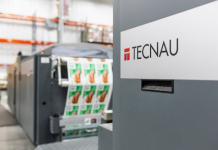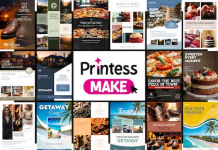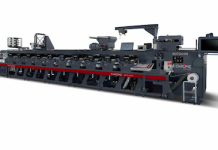Deborah Corn from Print Media Centr, and writing for drupa, says print can capitalise on this moment and help businesses and brands create trust through their printed communications.
At this point in time, we all live, communicate, learn, market, sell, shop and so on in digital and physical spaces whether they are separate or combined experiences. Print rarely lives in a physical world only silo anymore. Including links of any kind to digital media makes it part of a multi or omnichannel strategy. Even my one-time use grocery bags have a URL printed on them. I’ve seen others with QR codes.
What has changed significantly over the last few years is digital and social media marketing, and the volume of it coming at us on every device and channel. Driven by the pandemic, electronic communications became the default channel for customer engagement with many brands and businesses. And with that inbox door ajar, the spammers and scammers kicked it wide open.
In December of 2022, I received an email from my bank about an update to my account. I put on my forensic detective hat and went through each line of the email to make sure it was real. I checked the disclaimer. No spelling or grammatical errors, correct logo, year and copyright info. I deemed it safe to click. My Mac opened Safari and then Safari tried to open something that was not my bank’s website. I lurched at my keyboard, gripped my mouse and shut down Safari. My heart was racing.
After all my skilled digital detective work they still got me. I shut down all my programmes, opened Norton and clicked on full scan. I learnt two important lessons during the hour and a half I watched the Norton wheel spin, waiting to see if any viruses or malware were detected.
The first is that I have a serious file hoarding situation on my computer despite having cloud storage, a hard drive backup and Time Machine. Every minute that went by for a useless file to be checked, or four copies of the same file stored in multiple places was painful.
The second was more of an epiphany. In a semi-hypnotic state from watching the spinning Norton wheel from hell I realised this: had I received a communication from my bank through my mailbox, I would have safely connected through the URL or QR code provided to get me online. And, I would have visited that URL and/or scanned the QR code without any doubt that the information legitimately came from my bank, and the digital bridge was a secure process.
That trust puts print in a powerful position. I asked ChatGPT to list the largest consumer data breaches and the outcomes. This is some of the information it returned through 2021, only:

I was personally caught in three of these data breaches. Alarming emails resulted in annoying password changes and luckily nothing else. However, I no longer store my credit card in my apps and when possible, I use Google Pay or PayPal as my preferred method.
I then asked ChatGPT what people fear about digital marketing. These were some of the results:

These fears are now part of our collective human experience. They are also part of our collective consumer experience. This is where positioning print as a security device comes in to save the day, as well as marketing budgets and campaign results.
People Trust Print
Several years back I read an article about a man in New York who was trying to navigate the emerging cannabis market and secure his spot in it. Let’s call him Dan. Dan was dealing with piles of paperwork and the time-consuming government bureaucracy associated with his goal of securing a license to open a dispensary. The writer covered all of this, but first diverted a few paragraphs to the business card he received from Dan upon their first meeting.
The writer recalled immediately focusing all his attention on the business card handed to him. He wrote about it being extra thick, with embossed type and gold foil stamping around the edges. It was also printed on both sides. He said it was the nicest card he had ever received and looked very expensive. He only printed a small number of cards that he needed immediately for the interview and a few meetings with banks and lawyers during the week.
The writer was taken back by the cost needed to understand why Dan would spend so much money on a business card, so he inquired. Dan responded, ‘That card transforms me from a drug dealer into a businessman.’
Print has authority. Print provides credibility. Print cements reputation. And print doesn’t contain viruses. It can’t be hacked. It is a trustworthy and a secure digital bridge. Enter QR codes. Or rather, the return of them.
Driven by the pandemic, QR codes have taken over the world. They provide a ‘touchless’ experience, and a secure digital bridge to online communications, information, menus, shopping, payments and everything else. Voice-first technology also provides a secure digital bridge when prompts are shared through print. For example, I can ask Alexa/Google/Siri to donate to a charity by saying a specific phrase shared in the communication. This process requires some set-up with Amazon, Google and Apple and IT skills. It hasn’t been democratised yet, but it is coming and when it does there is no going back.
In 2023, the sales opportunity for printers and marketers presents itself. Combine the rise of online scammers with the fear of consumers. Resolve that growing problem with the authority of print and by incorporating a secure digital bridge. Everyone understands this on a personal level now.
The future? That is the most exciting to me. The Metaverse is coming and the virtual B2B and B2C world needs the entirety of the print world to get their goods and materials into the physical space from the digital space, also known as ‘phygital’.
There is so much to learn about phygital, about AI, and about new technologies that will disrupt and ignite our industry. These topics and more will be featured at the drupa DNA forum from May 28 to June 7, 2024. I am honoured to co-host this exciting programming with Frank Tueckmantel.
DRUPA
https://www.drupa.com





















